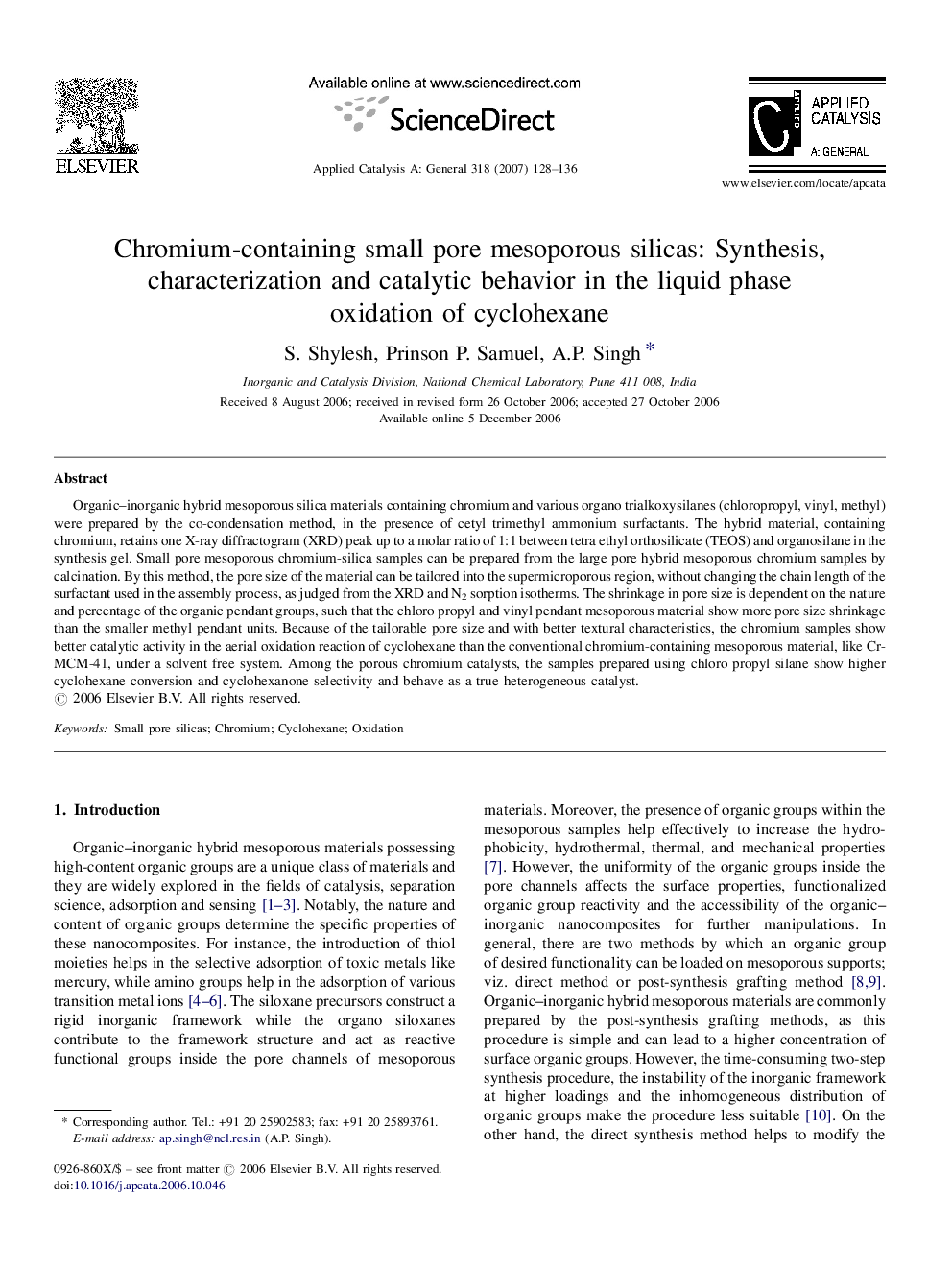| Article ID | Journal | Published Year | Pages | File Type |
|---|---|---|---|---|
| 44075 | Applied Catalysis A: General | 2007 | 9 Pages |
Organic–inorganic hybrid mesoporous silica materials containing chromium and various organo trialkoxysilanes (chloropropyl, vinyl, methyl) were prepared by the co-condensation method, in the presence of cetyl trimethyl ammonium surfactants. The hybrid material, containing chromium, retains one X-ray diffractogram (XRD) peak up to a molar ratio of 1:1 between tetra ethyl orthosilicate (TEOS) and organosilane in the synthesis gel. Small pore mesoporous chromium-silica samples can be prepared from the large pore hybrid mesoporous chromium samples by calcination. By this method, the pore size of the material can be tailored into the supermicroporous region, without changing the chain length of the surfactant used in the assembly process, as judged from the XRD and N2 sorption isotherms. The shrinkage in pore size is dependent on the nature and percentage of the organic pendant groups, such that the chloro propyl and vinyl pendant mesoporous material show more pore size shrinkage than the smaller methyl pendant units. Because of the tailorable pore size and with better textural characteristics, the chromium samples show better catalytic activity in the aerial oxidation reaction of cyclohexane than the conventional chromium-containing mesoporous material, like Cr-MCM-41, under a solvent free system. Among the porous chromium catalysts, the samples prepared using chloro propyl silane show higher cyclohexane conversion and cyclohexanone selectivity and behave as a true heterogeneous catalyst.
Graphical abstractOrganic–inorganic hybrid mesoporous silica materials containing chromium and various organo trialkoxysilanes (chloropropyl, vinyl, methyl) were prepared by the co-condensation method, in presence of cetyl trimethyl ammonium surfactants. Small pore chromium-silica samples having pores in the supermicroporous region can be prepared from the large pore hybrid mesoporous chromium samples by simple calcination, without changing the chain length of the surfactant used in the assembly process.Figure optionsDownload full-size imageDownload as PowerPoint slide
